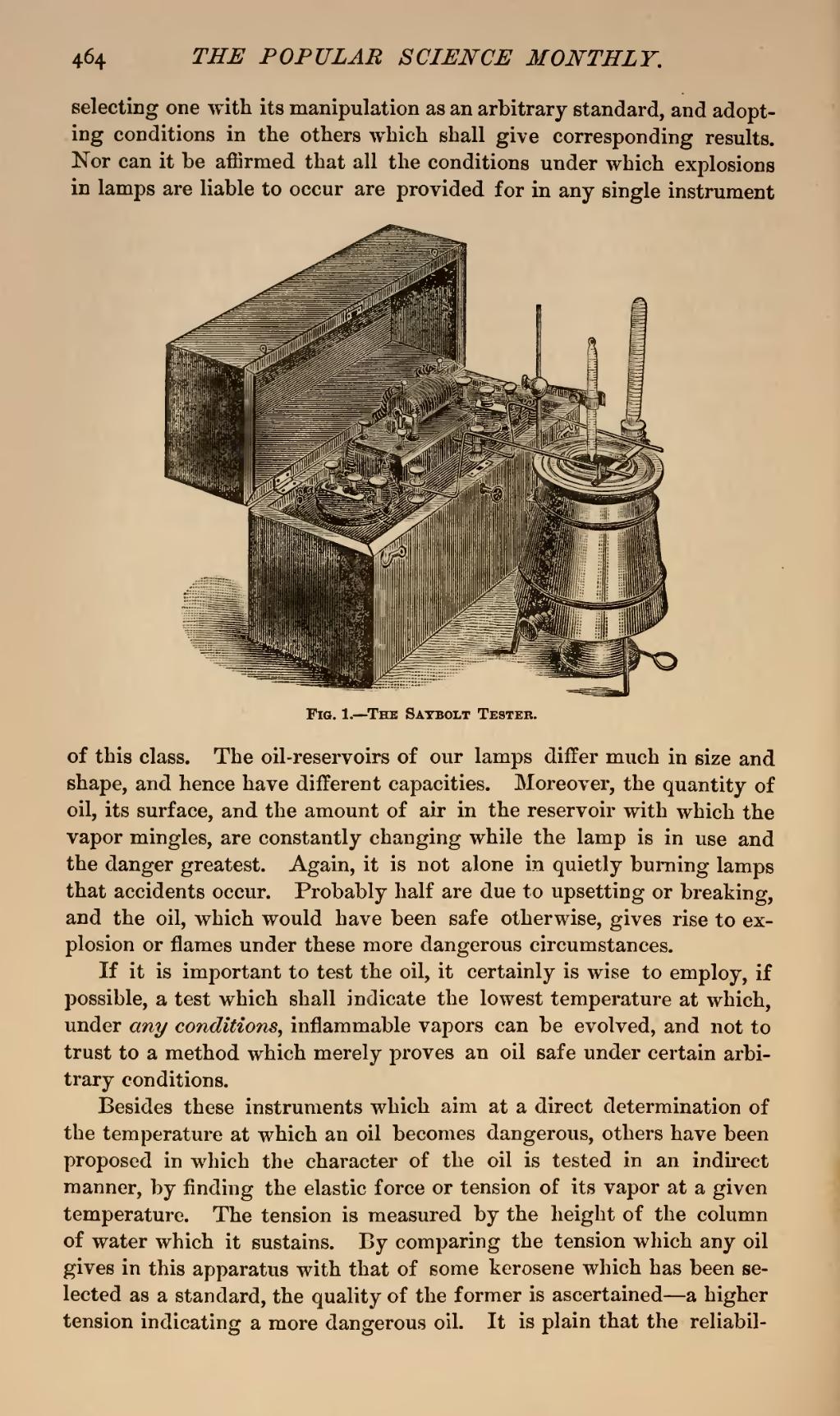selecting one with its manipulation as an arbitrary standard, and adopting conditions in the others which shall give corresponding results. Nor can it be affirmed that all the conditions under which explosions in lamps are liable to occur are provided for in any single instrument

Fig. 1.—The Saybolt Tester.
of this class. The oil-reservoirs of our lamps differ much in size and shape, and hence have different capacities. Moreover, the quantity of oil, its surface, and the amount of air in the reservoir with which the vapor mingles, are constantly changing while the lamp is in use and the danger greatest. Again, it is not alone in quietly burning lamps that accidents occur. Probably half are due to upsetting or breaking, and the oil, which would have been safe otherwise, gives rise to explosion or flames under these more dangerous circumstances.
If it is important to test the oil, it certainly is wise to employ, if possible, a test which shall indicate the lowest temperature at which, under any conditions, inflammable vapors can be evolved, and not to trust to a method which merely proves an oil safe under certain arbitrary conditions.
Besides these instruments which aim at a direct determination of the temperature at which an oil becomes dangerous, others have been proposed in which the character of the oil is tested in an indirect manner, by finding the elastic force or tension of its vapor at a given temperature. The tension is measured by the height of the column of water which it sustains. By comparing the tension which any oil gives in this apparatus with that of some kerosene which has been selected as a standard, the quality of the former is ascertained—a higher tension indicating a more dangerous oil. It is plain that the reliabil-
